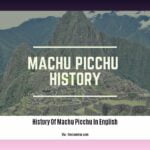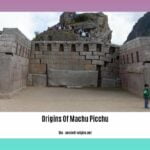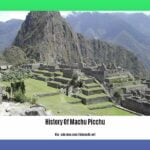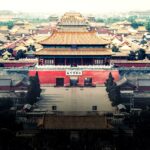Powerful Key Lines:
- The Inca Empire, flourishing from the 15th to 16th centuries, stands as a testament to sophisticated social organization and innovation in pre-Columbian America, directly challenging Eurocentric narratives of progress. (Emphasizes significance and challenges common historical biases)
- More than just Machu Picchu, the Inca legacy encompasses an intricate web of roads, a unique economic system (Mit’a), and religious practices that reverberated through Andean societies long after the empire’s fall. (Expands beyond typical focus on Machu Picchu and highlights specific achievements)
- The Inca mastery of challenging Andean terrain through ingenious agricultural techniques and monumental architecture like Machu Picchu showcases adaptations vital for understanding diverse empires in AP World History. (Connects directly to AP themes of adaptation and environmental interaction)
- The abrupt collapse of the Inca Empire at the hands of Spanish conquistadors serves as a stark reminder of the transformative, and often devastating, impact of global interaction in the early modern period. (Links the Inca to broader AP themes of conquest, colonialism, and its consequences)
The Rise of an Andean Powerhouse (c. 1400-1533 CE)
The Inca Empire, a civilization that flourished amidst the formidable Andes Mountains of South America, stands as a testament to human ingenuity and adaptability. Emerging in the 15th century, the Inca overcame the geographic constraints of their environment to establish a vast and sophisticated empire. Their story, often overshadowed by their Mesoamerican counterparts, the Aztecs, offers critical insight into themes of state-building, cultural interaction, and the consequences of colonialism in AP World History.
Emerging from the fertile Cusco Valley, the Inca, according to their origin myths, were led by the divine siblings Manco Capac and Mama Ocllo. These mythical figures, likely embellishments of historical figures, embody the Inca connection to both the spiritual and natural worlds. From these humble beginnings, the Inca embarked on a period of expansion, driven by a combination of military might and shrewd diplomacy. Rulers like Pachacuti, whose name literally translates to “Earth-Shaker,” implemented a combination of military conquest and strategic alliances, often solidified through political marriages, to incorporate neighboring groups into their burgeoning empire.
Inca Innovations: Navigating Challenges, Forging an Empire
The Inca faced a unique set of challenges in forging their empire. The rugged Andean terrain, characterized by towering peaks and deep valleys, could have easily stymied their ambitions. However, the Inca, through a combination of innovative technologies and a highly organized social structure, transformed these obstacles into opportunities.
A Society Built on Cooperation: The Mit’a System
Central to Inca success was the Mit’a system, a form of labor taxation that obligated able-bodied citizens to contribute to public works projects. Unlike traditional tax systems that relied on goods or currency, the Mit’a system harnessed collective manpower to construct the infrastructure that would come to define the Inca Empire. This system, while appearing exploitative through a modern lens, was, in its time, essential to the Inca’s ability to connect their vast empire and maintain social cohesion.
Engineering Marvels: Connecting a Mountainous Empire
The Inca road system, known as the Qhapaq Ñan, stands as a testament to their engineering prowess. This intricate network of roads and bridges, spanning over 10,000 miles, traversed some of the most challenging terrain on Earth. It connected the far-flung corners of the empire, facilitating trade, communication, and the swift movement of troops. The construction of these roads, often carved into mountainsides and traversing precarious suspension bridges, required an unparalleled understanding of engineering and a deep respect for the demanding Andean landscape.
Farming on the Edge: Adapting to the Andes
The Inca’s agricultural innovations were equally impressive. Recognizing the limitations of their environment, they developed sophisticated techniques to transform the steep Andean slopes into fertile farmland. Terraced farming, a practice whereby mountainsides were carved into a series of stepped platforms, prevented soil erosion and maximized arable land. These terraces, often irrigated by complex systems of canals and aqueducts, allowed the Inca to cultivate a variety of crops, including potatoes, quinoa, and maize, all of which would later become dietary staples across the globe. This mastery of agriculture ensured a stable food supply for a growing population and highlights the Inca’s adeptness at adapting to their environment.
Beyond Bricks and Roads: A Glimpse into Inca Life
The Inca Empire was not solely defined by its technological advancements and organizational prowess. Their culture, rich in symbolism and deeply interconnected with the natural world, offers a glimpse into the lives and beliefs of a people whose history continues to fascinate and inspire.
A Divine Hierarchy: The Sapa Inca and the Cosmos
At the heart of Inca society was the Sapa Inca, the emperor who was believed to be a descendant of Inti, the Sun God. This divine lineage imbued the Sapa Inca with absolute authority, reinforcing the connection between the earthly and celestial realms. The Inca pantheon, much like their empire, was vast and complex. Inti, the life-giving sun, held a preeminent position, reflecting the importance of agriculture in Inca society. Other deities, often associated with natural forces like mountains, rivers, and the moon, played integral roles in Inca cosmology. Religious festivals, such as Inti Raymi, the festival of the sun, were grand affairs that celebrated the cyclical nature of life, honored the gods, and reaffirmed the Sapa Inca’s divine mandate to rule.
An Empire Woven in Knots: The Quipu and Inca Record Keeping
One of the most intriguing aspects of Inca civilization is their unique system of record-keeping: the quipu. These colorful, knotted cords served as a mnemonic device, allowing Inca administrators to record census data, track economic transactions, and even preserve narratives and historical events. The complexity of the quipu, a testament to Inca ingenuity in the absence of a written language, continues to intrigue scholars today. While much of the knowledge encoded within these knotted cords remains enigmatic, ongoing research suggests a depth and sophistication that challenges traditional understandings of literacy and communication.
Artistic Expressions: Textiles, Metalwork, and Music
Inca artistic traditions, often overlooked amidst the grandeur of their architecture, offer further insight into their cultural values. Their textiles, renowned for their vibrant colors and intricate patterns, were not merely garments but served as symbolic representations of social status and cultural identity. Metals, particularly gold and silver, held both aesthetic and spiritual significance. Inca metalworkers crafted exquisite jewelry, ceremonial objects, and even life-size replicas of important crops, showcasing their mastery of metallurgy and their reverence for the natural world. Inca music, often incorporating traditional Andean instruments like flutes, panpipes, and drums, played a central role in religious ceremonies and social gatherings. These artistic expressions, passed down through generations, provide a tangible link to the Inca past and continue to inspire contemporary Andean artists.
The Fall of an Empire: A Clash of Worlds
The Inca Empire, like many powerful civilizations before it, would eventually succumb to forces beyond its control. The arrival of Spanish conquistadors in the 16th century marked a turning point in Inca history, ushering in an era of conquest and transformation that would forever alter the Andean landscape. Francisco Pizarro, leading a small but determined expedition, arrived in 1532, capitalizing on a period of internal strife within the Inca Empire to exploit existing vulnerabilities.
The Inca, while initially taken aback by the appearance of these foreign invaders, possessed a military might that had subjugated much of the Andes. However, a combination of factors, including internal rebellions stemming from a recent succession crisis and the devastating effects of European diseases, severely weakened Inca resistance. Smallpox, a disease endemic to the Eastern Hemisphere, tore through the Inca population, decimating their ranks and sowing chaos within their social structures. The Inca, lacking immunity to these novel pathogens, faced a foe unlike any they had encountered before. The fall of the Inca capital, Cusco, in 1533 and the execution of the last Sapa Inca, Atahualpa, marked the beginning of Spanish colonial rule in the Andes and the end of an independent Inca Empire.
A Legacy Etched in Stone and Woven in Tradition
Despite the tragic collapse of their empire, the Inca left an indelible mark on the world. Their architectural achievements, particularly the mountaintop citadel of Machu Picchu, continue to captivate the global imagination, drawing millions of visitors each year. These enduring structures, testaments to Inca ingenuity and artistry, serve as powerful reminders of a civilization that flourished against all odds.
The Inca legacy, however, extends far beyond stone ruins. Their innovative agricultural practices, their sophisticated administrative systems, and their unique artistic traditions continue to influence Andean cultures today. The Quechua language, once spoken across the Inca Empire, remains a living testament to their cultural resilience, spoken by millions in the Andean region. Traditional textiles, music, and dances, passed down through generations, preserve the spirit of the Inca, demonstrating the enduring power of culture to transcend even the most profound historical upheavals.
The study of the Inca Empire, therefore, offers more than just a glimpse into a fascinating bygone era. It provides a critical lens through which to examine broader historical themes: the rise and fall of empires, the interaction between diverse cultures, and the lasting legacies of colonialism. The Inca, through their innovations, their adaptations, and their resilience, offer valuable insights into the complexities of human history and the interconnectedness of our world.
Unveiling the Inca Legacy: AP World History Significance
Recommended Titles:
- The Inca Empire: AP World History Must-Know Themes & Analysis (Focuses on AP exam relevance and keywords like “themes” and “analysis”)
- Beyond Machu Picchu: Unveiling the Inca Empire’s Impact on AP World History (Intriguing and emphasizes impact while using a popular landmark)
- From Roads to Religion: How the Inca Shaped AP World History’s Key Concepts (Connects directly to AP curriculum with “key concepts” and specific Inca achievements)
Key Points of the Inca Empire’s Contributions:
- Architectural Prowess:
- Machu Picchu and Cusco demonstrate precision stonework and connection to nature/cosmos.
- Infrastructure and Engineering:
- 25,000 miles of roads, bridges, and suspension bridges facilitated communication and integration.
- Agriculture and Resource Management:
- Terraced farming and irrigation systems ensured a reliable food supply.
- Cultivated and domesticated potatoes, quinoa, and maize.
- Social and Political Organization:
- Centralized system with the Sapa Inca as supreme ruler.
- Mit’a labor tax and social welfare programs fostered cohesion and efficiency.
- Culture and Arts:
- Skilled weavers, metalworkers, and musicians created intricate textiles, jewelry, and music.
- Quechua language still widely spoken, preserving cultural heritage.
Key Points of Inca Impact on the World:
- Architectural Marvels: Machu Picchu, Cusco, and other iconic structures demonstrate their advanced stoneworking techniques.
- Infrastructure and Engineering: Vast network of roads, bridges, and suspension bridges facilitated communication, trade, and military campaigns.
- Agricultural Innovations: Terraced farming and irrigation systems allowed them to cultivate crops in diverse ecosystems, including potatoes, quinoa, and maize.
- Social and Political Organization: Centralized system under the Sapa Inca and the “Mit’a” labor tax ensured public works projects.
- Cultural Legacy: Intricate textiles, jewelry, music, and the Quechua language have left a lasting cultural imprint.
Are you interested in learning when the famous Mansa Musa’s reign started? Explore our comprehensive article to find out!
- Unlocking Francis Alexander Shields’ Finance Empire: A Comprehensive Biography - July 12, 2025
- Unveiling Francis Alexander Shields: A Business Legacy - July 12, 2025
- Francis Alexander Shields’ Business Career: A Comprehensive Overview - July 12, 2025














